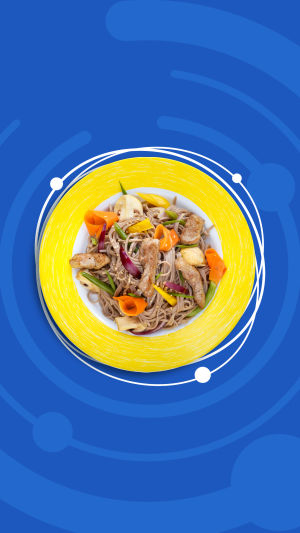On this earth, noodles made of wheat flour have different models, shapes and colours, such as Pasta in Italy and Nudeln in Germany. Back in Asia, this is the real birthplace of noodles
1. The raw material of Vietnamese river flour is rice, which is washed and ground into powder, then pressed into a slightly thick sheet and strips after steaming in a cage, which can be eaten fresh after cooling, while the dried rice flour is for easy preservation.
River noodle is divided into wide and narrow, generally speaking, it is divided into two kinds, soup noodles or fried noodles, and the two methods will change many flavours because of the different materials used
Good vermicelli has a very tough elasticity. When cooked, it is translucent white. When it is pulled out of the soup, it is a complete one. It will not break or stick. It has a crisp taste of elastic teeth in the mouth.
2. Korean noodles. Winter is not a good season to eat Korean cold noodles. But it's the right time to eat Korean noodles! In Korea, kimchi pot is a favourite winter food.
After eating meat, seafood, vegetables and other rinsed vegetables, and then handmade Korean noodles, we can put an end to this wonderful evening.
Korean noodles soybean paste is one of the representative Korean delicacies, heavy and rich in ingredients, and almost all people who go to South Korea will eat a bowl of authentic Korean noodles soybean paste.
3. Japanese Wudong noodles. Wudong Noodle is a staple food for ordinary people in Japan, and it was very popular in Kansai in ancient times. It is said that the local soil is not suitable for rice production, and grain production is not enough, so the widespread promotion of wheat cultivation, and thus the birth of Wudong these delicious noodles.
Because Wudong noodles originated in the countryside, you can taste the taste and raw materials of the countryside from it. Serve hot food in light soy sauce fish soup, or cold food with seasoning made of soybeans. Pasta varies according to the added decorative dishes.
Wild vegetables, tempura, seaweed and raw eggs are all commonly used additives, but meat is rarely used.
4. In China, noodles can be made in different ways, whether soup noodles or dry mixed noodles, long or short, rough or fine noodles can meet the needs of different consumers.
Noodles can be eaten for breakfast, lunch or dinner, and various side dishes can be added to noodles for nutritional balance, either vegetarian dishes or meat, plus various seasonings, such as vinegar and chilli peppers.
It can also be a variety of side dishes, such as sour radish, sauerkraut, garlic, mint and so on.





